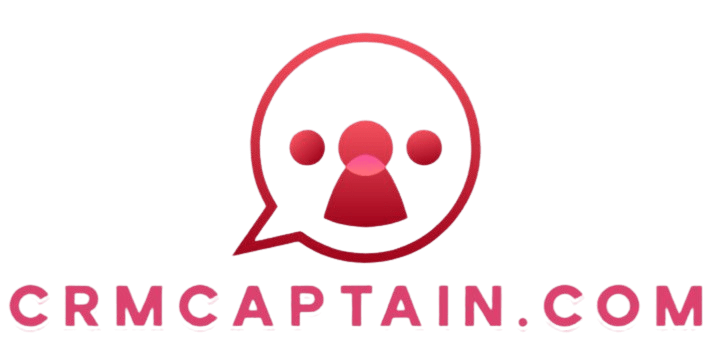Five Key Metrics to Monitor Post CRM Implementation
In today s competitive landscape, understanding your customers is more crucial than ever. Don t miss out on the opportunity to elevate your business! Implementing a CRM system can be a game-changer, but simply having one isn t enough.
To truly harness its potential, you must focus on key metrics that drive growth and enhance customer experiences. This article explores five essential metrics Customer Retention Rate, Customer Satisfaction Score, Average Resolution Time, Conversion Rate, and Return on Investment (ROI) that can guide your post-implementation journey and elevate your business performance.
By monitoring these metrics, you ll gain valuable insights into customer behavior and operational efficiency, ensuring your CRM investment truly pays off. Let s explore how you can leverage these metrics to transform your business strategy.
Contents
- Key Takeaways:
- 1. Customer Retention Rate
- 2. Customer Satisfaction Score
- 3. Average Resolution Time
- 4. Conversion Rate
- 5. Return on Investment (ROI)
- What Is CRM and Why Is It Important for Businesses?
- What Are the Different Types of CRM Metrics?
- Why Are These Metrics Important to Monitor Post CRM Implementation?
- How Can These Metrics Help Improve Business Performance?
- What Are the Common Challenges in Measuring These Metrics?
- How Can a Business Ensure Accurate Tracking and Measurement of These Metrics?
- Frequently Asked Questions
Key Takeaways:

Customer retention rate is a crucial metric to monitor post-CRM implementation as it directly reflects the success of the system in retaining customers and building loyalty.
The customer satisfaction score provides insights into how satisfied customers are with the CRM system and their overall experience with the business.
Average resolution time indicates the efficiency and effectiveness of the CRM system in resolving customer issues and concerns.
1. Customer Retention Rate
Customer retention rate is an essential metric for you, especially if you’re operating within a subscription-based model like a SaaS company. It directly influences your revenue growth and customer lifetime value.
To calculate this rate, subtract the number of customers acquired during a specific period from the total number of customers at the end of that period. Then, divide that figure by the initial number of customers.
This metric is vital because it has an inverse relationship with churn rate the percentage of customers who discontinue their service. A higher retention rate indicates that you re effectively meeting your clients needs.
A robust retention rate not only boosts customer lifetime value but also reflects the sustainability of your long-term relationships. To enhance this metric, implement effective CRM strategies such as personalized interactions and proactive support.
2. Customer Satisfaction Score
The Customer Satisfaction Score (CSAT) serves as a crucial gauge of how effectively you meet your customers’ needs and expectations. This score plays a pivotal role in bolstering customer loyalty and retention through effective CRM practices.
By consistently measuring CSAT through methods like surveys or feedback forms after service interactions, you can access valuable insights into your customers’ perceptions. This feedback aligns with the Net Promoter Score (NPS), since satisfied customers are more inclined to recommend your brand to others.
Understanding customer satisfaction is essential; it enables you to pinpoint areas needing improvement. By focusing on elevating customer care through personalized interactions, you can significantly enhance satisfaction rates.
3. Average Resolution Time
Average resolution time is a crucial performance indicator that reflects how efficiently your customer service team resolves issues. This metric shapes the overall customer experience and satisfaction.
To calculate this, take the total time spent resolving issues and divide it by the number of resolved cases. Regularly analyzing this data reveals trends and highlights bottlenecks within your service processes.
By honing in on these insights, you can refine your practices to reduce resolution times, creating a more positive customer experience. This ensures your customers feel valued and heard throughout their interactions with your brand.
4. Conversion Rate

Conversion rate is a vital metric that measures how effectively your sales process is functioning. It reflects the ratio of leads that successfully transform into customers.
This key measure directly influences your overall sales pipeline and customer acquisition costs. It not only indicates the health of your sales strategy but also sheds light on areas needing improvement.
Various factors can impact conversion rates, such as the quality of leads, how well your marketing aligns with customer needs, and the efficiency of your follow-up processes.
Implement focused lead generation strategies to engage your audience. This can significantly boost your conversion chances.
Streamlining your sales funnel, leveraging data analytics for actionable insights, and enhancing customer interactions can further refine your sales process. These strategies make your approach more effective at achieving essential conversion targets while aligning with your broader business objectives.
5. Return on Investment (ROI)
Return on investment (ROI) is a key measure that assesses how profitable your investments in sales strategies and marketing campaigns are. This metric gives you powerful insights into your sales performance and overall business health.
By accurately calculating ROI, you can pinpoint which sales tactics deliver the highest returns. This enables you to refine your approach and allocate resources more effectively.
This analysis showcases your successful strategies and highlights areas requiring improvement. You can make informed adjustments aligned with your growth objectives.
Think of ROI as your guiding compass for future investments. It steers you toward campaigns likely to yield robust results.
When you combine ROI with other key performance indicators, such as customer acquisition cost and lifetime value, you empower yourself to enhance decision-making and steer your business toward sustainable profitability.
What Is CRM and Why Is It Important for Businesses?
CRM, or Customer Relationship Management, is your strategic ally. It seamlessly integrates technology, data analysis, and relationship management practices to elevate your interactions with customers.
This approach enhances sales performance and amplifies customer satisfaction, boosting overall business efficiency for sales executives and managers alike.
By utilizing essential components like contact management, sales automation, reporting, and customer service tools, you can create a centralized repository of customer information.
This comprehensive perspective gives you the power to customize your strategies, ensuring you meet the specific needs and preferences of your clientele.
CRM systems enhance communication and collaboration across departments, fostering a customer-centered culture. As you gain deeper insights into customer behavior and trends, you’ll be better positioned to nurture long-term relationships.
These relationships not only enhance client retention but also drive sustainable revenue growth, ultimately transforming your business practices in a competitive landscape.
What Are the Different Types of CRM Metrics?
Understanding the various types of CRM metrics is vital for effectively measuring customer interactions and sales performance. This approach gives you the power to make data-driven decisions aligned with your business goals.
Here are some key CRM metrics you should track:
- Customer acquisition cost
- Churn rate
- Net promoter score
Customer acquisition cost enables you to evaluate the expenses involved in gaining new clients, offering insights into the effectiveness of your marketing strategies.
The churn rate serves as a measure of customer retention, revealing how many customers stop using your service over a specific timeframe.
The net promoter score acts as a barometer for customer loyalty and satisfaction, indicating how likely your clients are to recommend your brand.
Act now! By monitoring these metrics closely, you can refine your CRM strategies to cultivate lasting relationships and boost profitability!
Why Are These Metrics Important to Monitor Post CRM Implementation?

Monitoring metrics after implementing a CRM system is essential for assessing how effectively it boosts your business performance. For a deeper understanding, consider measuring ROI after CRM implementation. This evaluation empowers you to make informed adjustments to your sales process, customer care, and overall strategy.
By regularly tracking metrics, you can uncover invaluable insights into customer interactions and sales dynamics. Think of these metrics as your guiding compass, illuminating both the strengths and weaknesses of your current processes.
For instance, they can reveal which sales tactics resonate with your clients while also highlighting areas needing attention, such as response times or lead conversion rates. This continuous analysis fosters a culture of improvement, allowing you and your team to refine your approach based on solid data rather than mere assumptions.
Ultimately, harnessing this information is crucial for driving customer satisfaction and ensuring long-term success for your business.
How Can These Metrics Help Improve Business Performance?
CRM metrics are essential for enhancing your business performance, providing actionable insights that inform your sales strategies and boost your team’s effectiveness. This ultimately translates to improved customer experiences and increased revenue.
By analyzing customer acquisition costs, you can pinpoint which marketing channels deliver the best conversions, allowing you to allocate resources more efficiently.
Tracking metrics like customer lifetime value helps you understand how to nurture existing relationships, optimizing upselling and cross-selling opportunities in the process.
Metrics like customer satisfaction scores or Net Promoter Scores can reveal areas that require improvement, prompting you to take timely action to address client concerns.
Transforming these insights into strategic initiatives enables you to refine your sales techniques and craft personalized experiences that foster loyalty and propel long-term growth.
What Are the Common Challenges in Measuring These Metrics?
Measuring CRM metrics can present some common challenges, including data accuracy, consistency, and the ability to extract meaningful insights from performance indicators. For effective solutions, refer to our guide on tracking CRM implementation progress that directly impacts customer satisfaction and business success.
These issues often arise from technical hurdles, such as integrating various data sources and ensuring smooth communication between different platforms. The integrity of your data is paramount; inaccurate or outdated information can lead to misguided decisions.
To tackle these challenges, consider investing in robust CRM tools that come with advanced data validation features. Regular audits and automated reporting can significantly enhance your data quality and maintain consistency.
Training your staff on best practices for data entry and analysis fosters a culture of accountability and precision, ultimately boosting the effectiveness of your CRM strategies.
How Can a Business Ensure Accurate Tracking and Measurement of These Metrics?
Ensuring accurate tracking and measurement of CRM metrics is essential if you aim to leverage data to make informed decisions and enhance customer experiences. This requires the implementation of robust systems and processes.
Beyond simply collecting data, prioritize the reliability of your sources. Scrutinizing the accuracy and consistency of the data is crucial for informed analysis. Use several trusted data sources to confirm your findings, enhancing your confidence in the results.
Techniques like cross-referencing, audits, and validation checks serve as effective safeguards against inaccuracies. Adopting a systematic approach to data analysis streamlines your tracking efforts and reveals actionable insights.
Ultimately, this empowers you to develop better strategies that truly resonate with your customers’ needs and expectations.
Frequently Asked Questions

What are the five key metrics to monitor after a CRM implementation?
After implementing a CRM, monitor these five key metrics: customer retention rate, customer satisfaction, sales conversion rate, lead response time, and ROI.
Why is it important to monitor these metrics?
Tracking these metrics helps businesses evaluate how to measure CRM software effectiveness. It also allows for adjustments to improve performance.
How can customer retention rate be measured?
Calculate the percentage of customers who continue to do business after the CRM is in place. Compare this with the retention rate before implementation to see the CRM s impact.
What is an ideal customer satisfaction rate?
A satisfaction rate above 90% is ideal after CRM implementation. This indicates that the CRM meets customer needs and enhances their experience.
How can lead response time be improved?
Use the CRM to automate lead management and ensure timely follow-ups. This can boost your sales conversion rate.
What factors affect ROI post CRM implementation?
ROI can be influenced by the CRM’s cost, training expenses, integration costs, and the efficiency gains it provides. Regularly tracking ROI is crucial to confirm that the CRM is delivering positive returns.





